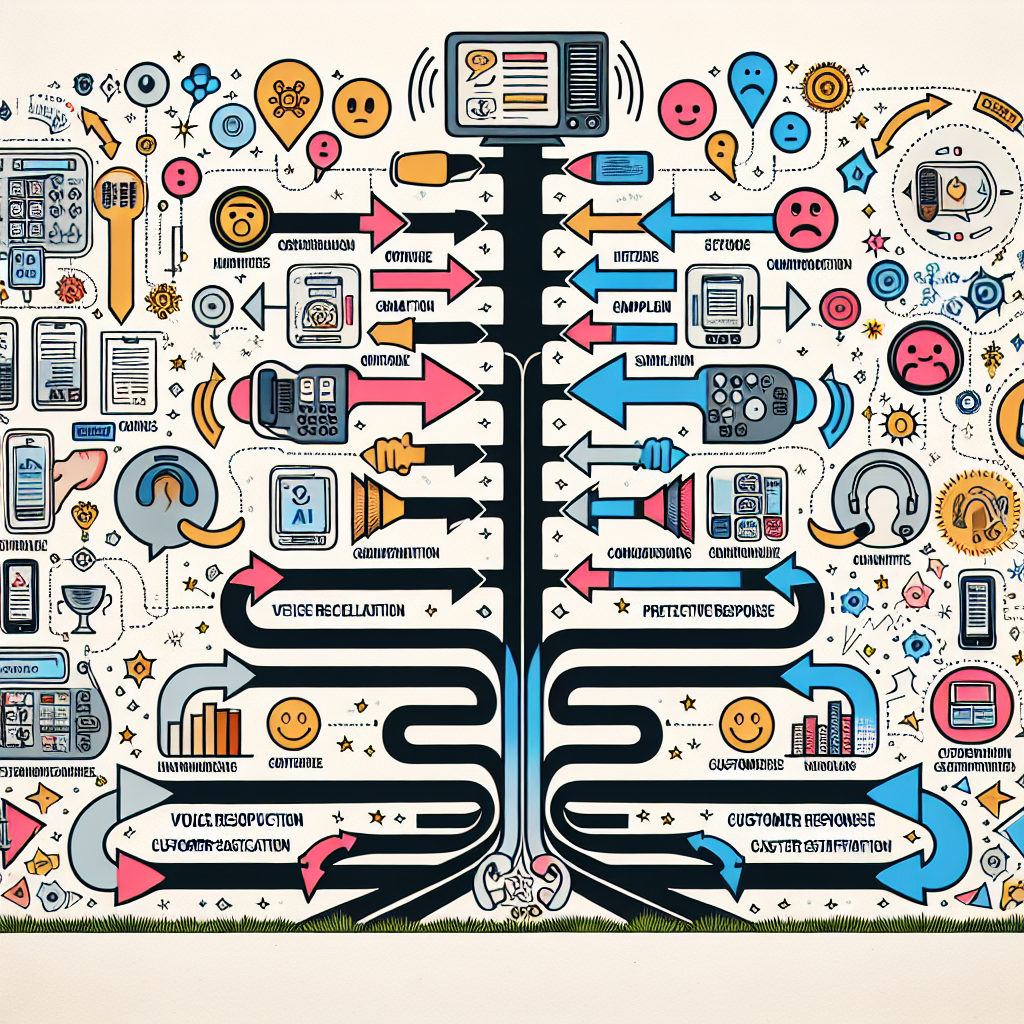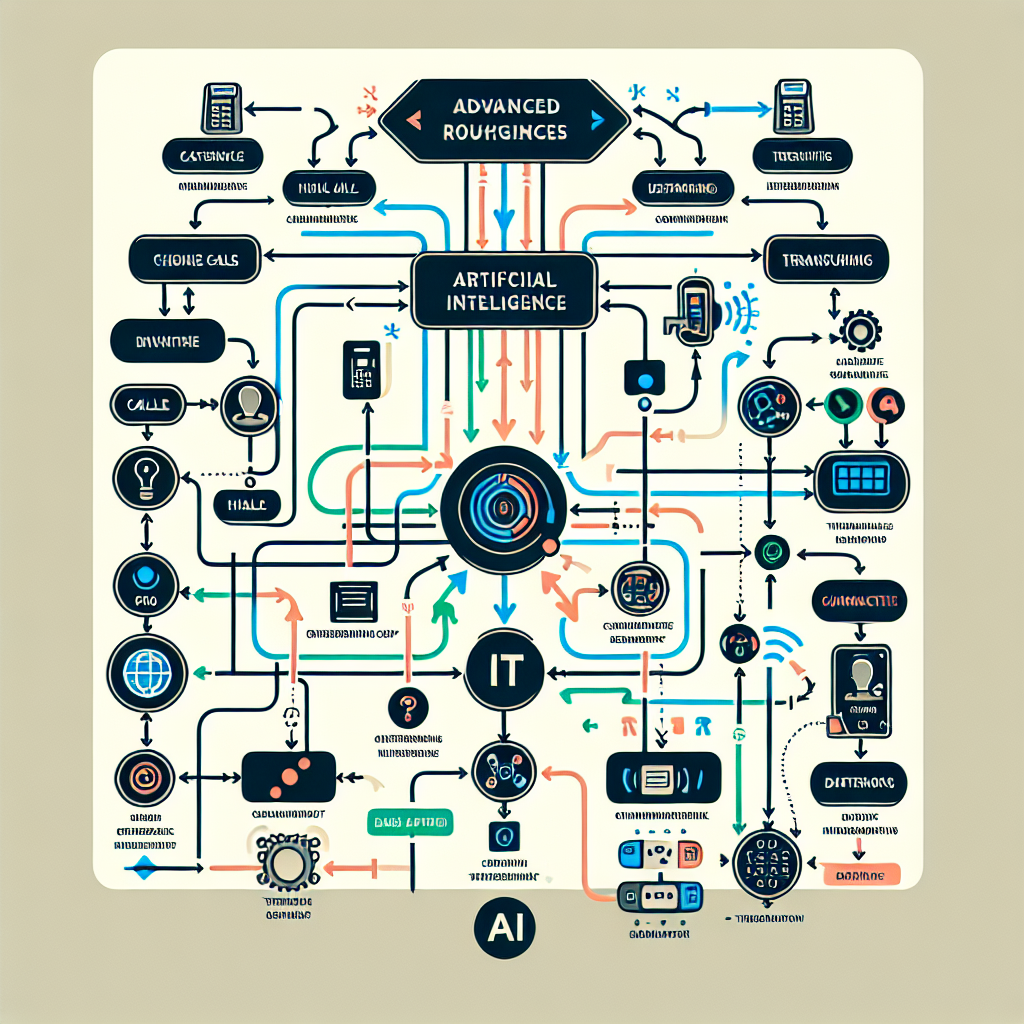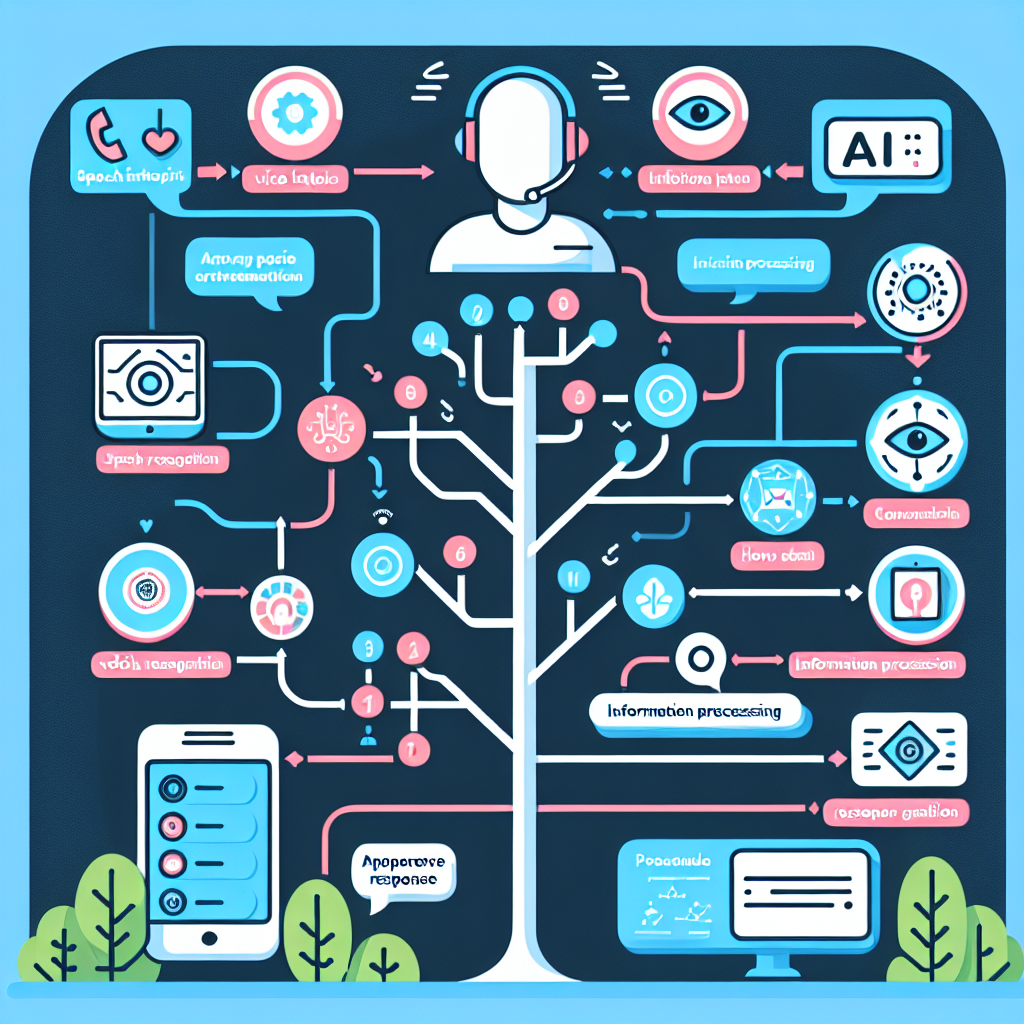
The world of customer service has significantly evolved, and at the heart of this evolution lies the integration of Artificial Intelligence (AI). Among the diverse applications of AI in customer service, one promising usage is in the realm of phone tree systems, often referred to as Interactive Voice Response (IVR) systems.
Historically, phone tree systems have had a reputation of being inefficient and frustrating for callers. They follow one-size-fits-all paths that frequently lead callers into a maze of options, none of which might cater to their specific needs. These systems also tend to be time-consuming, translating to longer waiting times and increased caller dissatisfaction.
However, the advent of AI has largely mitigated these challenges. AI utilities advanced machine learning algorithms to intuitively learn from past data, thereby enhancing the caller experience by predicting their needs and driving them to the most relevant solutions in real time.

Furthermore, with AI technology, we can now customize phone tree solutions to align better with individual callers, thereby minimizing unnecessary detours in the caller's journey. AI, with its potential for Natural Language Processing, can understand and respond to colloquial language instead of relying on pre-programmed voice commands. This allows callers to engage in more natural and intuitive interactions.
In conclusion, the integration of AI in phone tree systems breathes new life into a traditionally monotonous and frustrating caller experience. AI in phone trees is no longer a futuristic concept but a practical and effective tool that organizations can utilize today to enhance customer satisfaction and optimize their service efficiency.
In the age of digital transformation, artificial intelligence (AI) has become an essential tool for businesses striving to improve customer interaction and satisfaction. The adoption of AI in phone tree optimization is no exception, which now provides improved navigation for callers.
Arguably one of the primary benefits of incorporating AI in phone system optimization is the dramatic enhancement of the caller experience. AI achieves this by analyzing voice interactions and caller data. How AI uses voice data to improve service is a fascinating study on this aspect. The intelligent system uses this information to provide quick, relevant responses, thereby significantly reducing wait times and frustration.
Recognizing caller intent forms a robust part of this process. An AI-driven voice recognition technology 'listens' to a caller's request and, by understanding the nuances of human language, it can identify the purpose of the call. This understanding enables the system to route the call to the appropriate department or representative, speeding up the resolution process and enhancing the caller's experience.
Beyond recognizing caller intent, AI technology also offers the advantage of providing personalized options to callers. Based on a caller's history and preferences, AI can suggest and prioritize the most relevant options, creating a tailored interaction that makes customers feel valued and understood. For more informative insights, one might be interested in Personalization in customer service through AI.
In essence, the integration of AI in phone tree optimization is a game-changer in the realm of customer service. It not only safeguards the efficiency of the service but also enriches the caller's encounter, making it more personalized and satisfying. Therefore, the role of AI in revolutionizing phone systems is indeed significant, promising a more efficient and customer-centric future in business communications.
Artificial intelligence (AI) is revolutionizing phone tree optimization, with an impressive feature: advanced routing capabilities. This capability allows an intelligent phone system to understand the essence of a caller's request, refer to previous interactions, and make real-time decisions on where to direct them. This not only reduces wait times significantly but also steers callers to appropriate resources more efficiently. Learn more about AI in call routing.

Advanced routing isn't about simple condition-based call forwarding anymore. Leveraging Natural Language Processing (NLP) and Machine Learning (ML) , AI has the capability to understand context, sentiment and nuances within a conversation. This enables it to interpret call intent accurately, ensuring callers are directed to their appropriate destinations without unnecessary detours. For instance, a call about a software issue could be directed to a support agent proficient in that software, or a repeat caller inquiring on product delivery details might be directed to delivery tracking self-service options. More on Natural Language Processing and its role in call routing.
Moreover, AI's learning ability not only bases decisions on historical data but also takes into account real-time interactions. This empowers the system not just to repeat actions that proved useful in the past, but to adapt dynamically to the current situation. The ability to make smarter, informed decisions on-the-go ensures that callers no longer need to go through lengthy, frustrating menus, thereby enhancing customer satisfaction. Read on the influence of real-time decision-making in AI call routing.
In conclusion, modern phone systems, enhanced by AI, make the calling experience more user-friendly, efficient, and personalized, optimizing call routing like never before. As AI continues to evolve, we can expect further enhancements in this area, making advanced routing an integral part of customer service operations.
The power of artificial intelligence in optimizing phone tree systems is evident not just in theory, but in practice as well. There are numerous case studies that demonstrate a significant improvement in caller navigation after AI implementation. One such example is the IBM Watson integration into their own customer service line. By utilizing advanced AI, IBM was able to increase first contact resolution by 99%, a colossal leap in customer satisfaction and efficiency.
Another compelling instance is the implementation of AI in the Bank of America's customer service system. The AI, referred to as Erica, handled 50 million client requests in less than two years and currently has some 10 million users in its client base. This significant number demonstrates the extent to which AI can enhance phone tree systems, making them more effective and helping businesses to provide quality service to a larger number of clients.
AI-powered systems, like these, optimize phone tree navigation by utilizing intelligent routing protocols to ensure callers are correctly and promptly directed to the most helpful and pertinent division to address their concerns. The system's efficiency is amplified by its ability to learn and adapt to caller behavior and improving operational efficiency.
Another daunting challenge in telecommunication has been the issue of long hold times. However, some companies, such as the Insurance company, were able to radically reduce those hold times and improve customer satisfaction with an AI system. This adaptability and learning capacity are a testament to AI's potential for escalating operational efficiency.
What these case studies reveal is the transformative power that AI possesses in improving phone tree systems and overall call center productivity. Businesses across various sectors are reaping these benefits and effectively minimizing inefficiencies in their customer service arena with the help of AI.
Artificial Intelligence (AI) technology is rapidly transforming various areas of business, including customer communication. One notable area where AI is making significant strides is phone tree systems. By leveraging AI, businesses can provide efficient and seamless caller navigation, thus enhancing the overall user experience.

AI-powered phone trees are increasingly integrating features such as voice recognition and natural language processing, enabling them to understand spoken commands more effectively. The adoption of these feature-rich voice-activated phone systems allow for quicker and more accurate routing of calls, reducing waiting times and improving customer satisfaction. Despite these tangible advancements, the exciting question remains; what does the future hold for AI in phone systems?
Emotive AI is seen as one of the future trends. This advanced technology reacts to the emotional state of the caller, not just the words themselves, making the navigation process more adaptive and responsive. Another promising area is the integration of AI with other emerging technologies like Internet of Things (IoT) and blockchain, spawning advanced communication networks that can securely exchange vast quantities of verified information at high speeds.
One more trend positioning itself on the horizon is the development of predictive dialers. Tools using this AI technology consider prior user behavior to predict the optimal time for businesses to engage with customers over the phone. The application of predictive dialing combined with AI is likely to yield higher answer rates, thus increasing overall efficiency in business communication.
In conclusion, the future of AI in phone systems appears bright, with innovative technologies and use-cases emerging consistently. This revolution ensures that businesses can provide a more nuanced, efficient, and personalized communication experience to their customers, underscoring the pivotal role of AI in enhancing business strategy and customer service.
Start your free trial for My AI Front Desk today, it takes minutes to setup!








